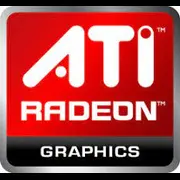ATI Radeon HD 4870 Mac Edition

ATI Radeon HD 4870 Mac Edition: A Retrospective of a GPU for Enthusiasts and Collectors
Introduction
The ATI Radeon HD 4870 Mac Edition, released in 2009, became one of the few specialized solutions for Apple computers based on the R700 architecture. Despite its age, it still piques the interest of collectors and users of older systems. In this article, we'll explore the key features of the card, its performance, and its relevance in 2025.
1. Architecture and Key Features
R700 Architecture
The HD 4870 Mac Edition is built on the R700 architecture, which at the time was considered groundbreaking due to its 55nm manufacturing process. This allowed for the integration of 800 stream processors and 40 texture units on a single die.
Technologies and Functions
The card supported DirectX 10.1, OpenGL 3.3, and OpenCL 1.0, making it compatible with professional macOS applications. However, modern features like ray tracing (RTX), DLSS, or FidelityFX were absent—they emerged a decade later. Among its unique features was GDDR5 memory with doubled data transfer rates, which was innovative for 2009.
2. Memory: The Foundation of Performance
Type and Capacity
The HD 4870 Mac Edition came equipped with 512 MB of GDDR5 memory with a 256-bit bus. Its bandwidth reached 115.2 GB/s (3.6 Gbps × 256 bits / 8), which was an impressive figure for the DirectX 10 era.
Impact on Performance
The high bandwidth allowed the card to manage high-resolution textures in games like Crysis or Call of Duty: Modern Warfare 2. However, this amount is insufficient for modern tasks such as 4K video rendering.
3. Gaming Performance
FPS Examples (at Release Time)
- Crysis (1680×1050, High): 25–30 FPS;
- Left 4 Dead 2 (1920×1200, Ultra): 45–50 FPS;
- World of Warcraft (1920×1200, High): 60+ FPS.
Resolution Support
The card was optimized for 1080p and 1440p, but even in older projects at 4K (3840×2160), it showed less than 15 FPS due to limited memory.
Ray Tracing
The HD 4870 Mac Edition does not support hardware ray tracing—this technology only emerged with NVIDIA's RTX 20 series in 2018.
4. Professional Tasks
Video Editing and 3D Modeling
With support for OpenCL, the card could accelerate rendering in Final Cut Pro 7 or Adobe Premiere CS4. For 3D modeling in Autodesk Maya 2010, it was suitable at a basic level, but serious projects required more powerful solutions.
Scientific Calculations
The computational performance (around 1.2 TFLOPs) is too low for modern tasks in machine learning or simulations.
5. Power Consumption and Heat Dissipation
TDP and PSU Requirements
The card has a TDP of 150 W, which necessitated a power supply of at least 450 W for stable operation (considering other components).
Cooling
The standard cooling system consists of a single-slot heatsink with a turbine fan. This was sufficient for the 2009 Mac Pro, but overheating could occur in compact cases. Regular dust cleaning and thermal paste replacement are recommended.
6. Comparison with Competitors
NVIDIA GeForce GTX 285
The main competitor in 2009, the GTX 285, offered similar gaming performance but fell short in OpenCL tasks. Its TDP was higher (183 W), making the HD 4870 more energy-efficient.
Modern Analogues
In 2025, the HD 4870 Mac Edition can be compared to budget GPUs like the AMD Radeon RX 6400 ($100), which is ten times more powerful and supports all current technologies.
7. Practical Tips
Power Supply
A minimum of 450 W with a 6-pin PCIe connector is required. The stock PSU of 600 W is suitable for the Mac Pro 2009.
Compatibility
The card only works in Mac Pro models from 2009 to 2012 with macOS Snow Leopard (10.6) or earlier. Modified drivers are needed for Windows PCs.
Drivers
Official support ceased in 2015. For macOS High Sierra and later, third-party patches will have to be used.
8. Pros and Cons
Pros:
- High performance for its time;
- Full compatibility with old Mac Pros;
- Reliable construction (no chip degradation issues).
Cons:
- No support for DirectX 12 and modern APIs;
- Limited memory capacity;
- High power consumption by modern standards.
9. Final Conclusion
In 2025, the ATI Radeon HD 4870 Mac Edition is a relic for:
- Collectors assembling retro hardware;
- Owners of old Mac Pros wanting to restore system functionality;
- Enthusiasts experimenting with vintage gaming.
It is unsuitable for modern tasks, but as a part of computer history, it deserves attention. If you are looking for a GPU for everyday use, consider budget models from AMD or NVIDIA from the 2020s—they offer better performance, energy efficiency, and support for current technologies.
Note: New units of the HD 4870 Mac Edition have not been sold since 2012. On the secondary market, prices range from $50 to $150 depending on condition.
Basic
Memory Specifications
Theoretical Performance
Miscellaneous
Benchmarks
Compared to Other GPU
Share in social media
Or Link To Us
<a href="https://cputronic.com/gpu/ati-radeon-hd-4870-mac-edition" target="_blank">ATI Radeon HD 4870 Mac Edition</a>